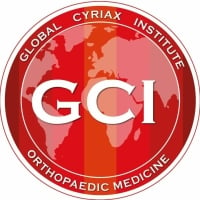Do you also ask "Does it hurt?"
Why “Does It Hurt?” Isn’t Always the Best Question in Musculoskeletal Functional Examinations
In musculoskeletal (MSK) assessments, the question “Does it hurt?” is commonly used during functional examinations. While simple and intuitive, this question has significant limitations and is not always the most effective way to gather meaningful clinical information.
1. Pain Is Subjective and Variable
Pain is a complex, subjective experience influenced by multiple factors—including mood, stress, expectations, and cultural background. A patient may say “yes” or “no” based on their pain tolerance, how they interpret discomfort, or even how they perceive the clinician’s expectations. Asking “Does it hurt?” often elicits vague or inconsistent answers that may not reflect functional limitations or the severity of the condition.
2. It Focuses Solely on Pain, Not Function
Musculoskeletal disorders often involve stiffness, weakness, instability, or mechanical symptoms like clicking or locking—none of which may be painful. A patient might not report pain, but still have significant dysfunction. Therefore, focusing only on pain can cause clinicians to overlook important impairments.
Instead, questions like:
- “Can you do this movement comfortably?”
- “Does that change anything?”
- “Do you feel restricted or limited here?”
- “Does anything feel abnormal—tight, weak, unstable?”
—can provide richer, function-focused information.
3. Pain Doesn’t Equal Pathology
Some patients experience pain without tissue damage (e.g., in central sensitization), while others may have structural issues without any pain. Asking only about pain risks overemphasizing it as a marker of severity or tissue damage, which can lead to over-investigation or patient fear.
4. It May Reinforce Fear-Avoidance Behavior
Repeatedly focusing on whether something “hurts” can unintentionally reinforce pain-focused thinking. This may promote fear-avoidance behavior, where patients begin to associate movement with harm, leading to deconditioning and prolonged disability.
Conclusion
While asking about pain has its place, “Does it hurt?” should not be the primary or only question during a functional MSK exam. A more nuanced approach—centered on function, movement quality, confidence, and limitations—provides a broader, more clinically useful picture and helps support patient-centered, active rehabilitation strategies.
